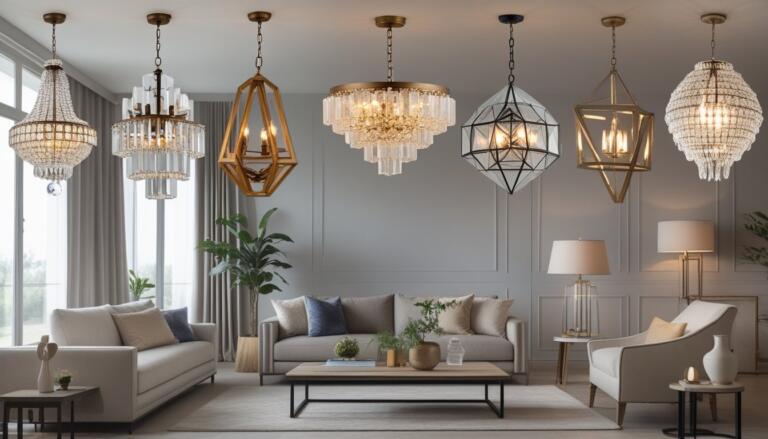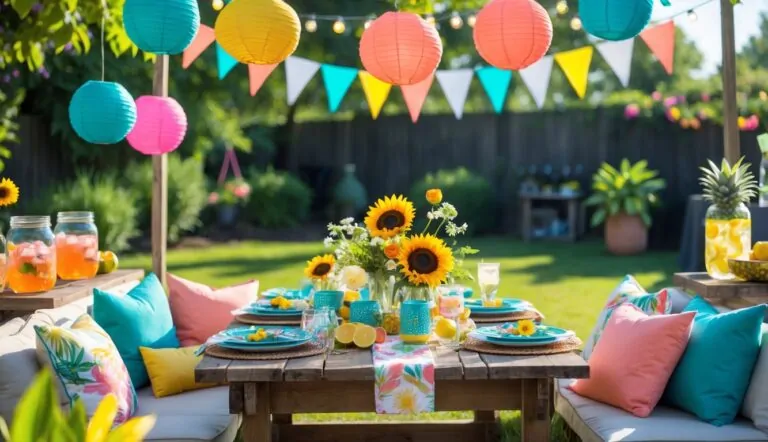7 Bedroom Paint Colors Ideas to Transform Your Spacious Home
Choosing the right paint color can change the whole feel of a bedroom. It affects mood, style, and how restful the space feels. Many people look for ideas that balance comfort with a fresh look.
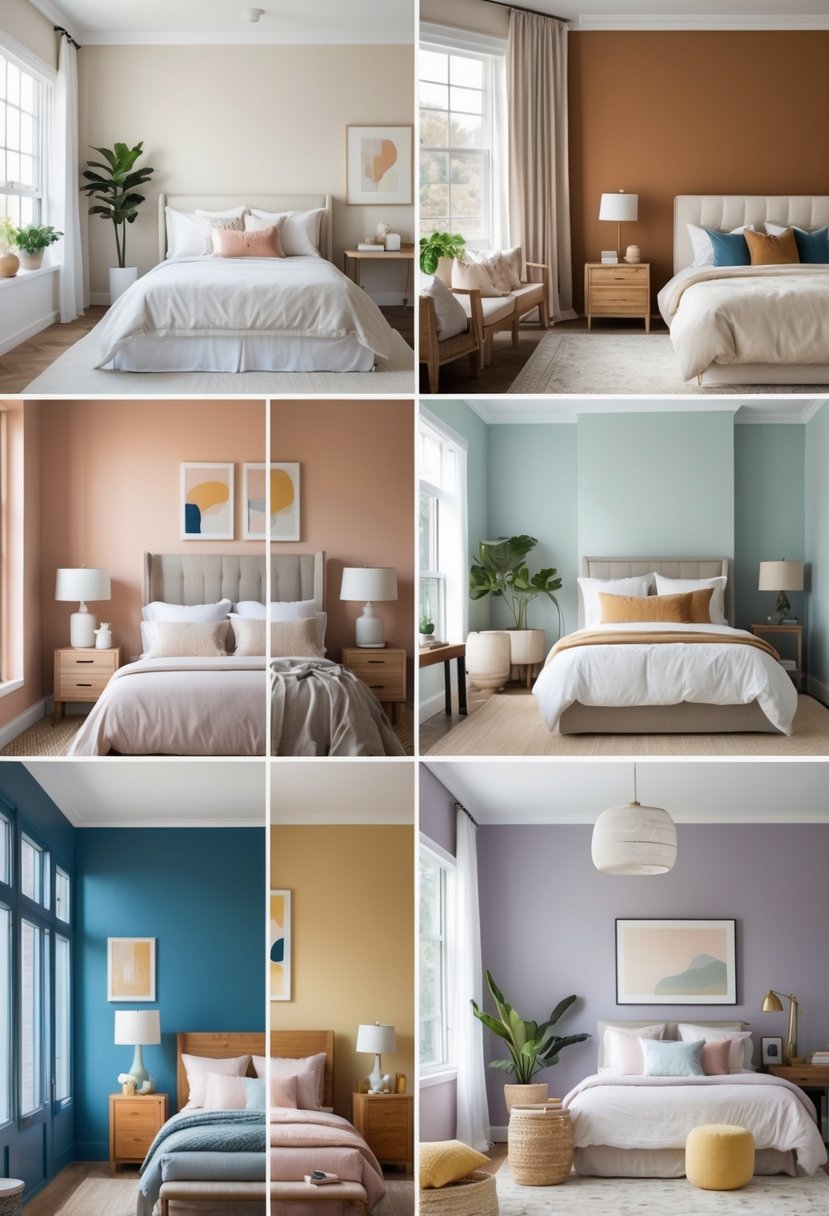
The best bedroom paint colors create a calm, inviting space that fits personal taste and promotes relaxation. This article explores seven paint color ideas to help transform any bedroom into a peaceful retreat. It offers simple ways to update the room without overwhelming it.
1) Warm Neutral Tones for Cozy Ambiance
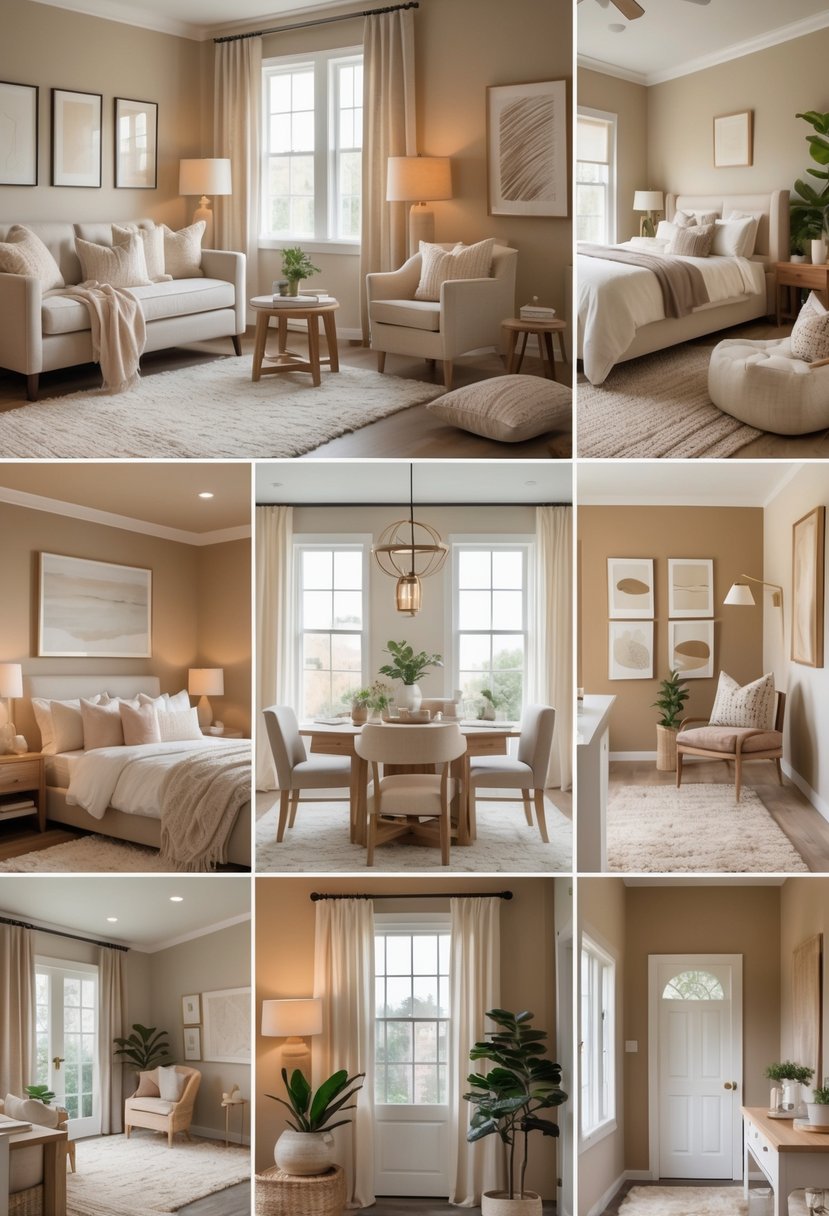
Warm neutral tones like beige, taupe, and soft cream create a calming and inviting bedroom. These colors work well with various styles and provide a comfortable base that is never too loud or cold.
They help soften the room’s look while making the space feel balanced. Warm neutrals also pair easily with accent colors, adding depth without overwhelming the senses. This makes them a practical choice for a cozy atmosphere.
2) Soft Blue Shades to Promote Calmness
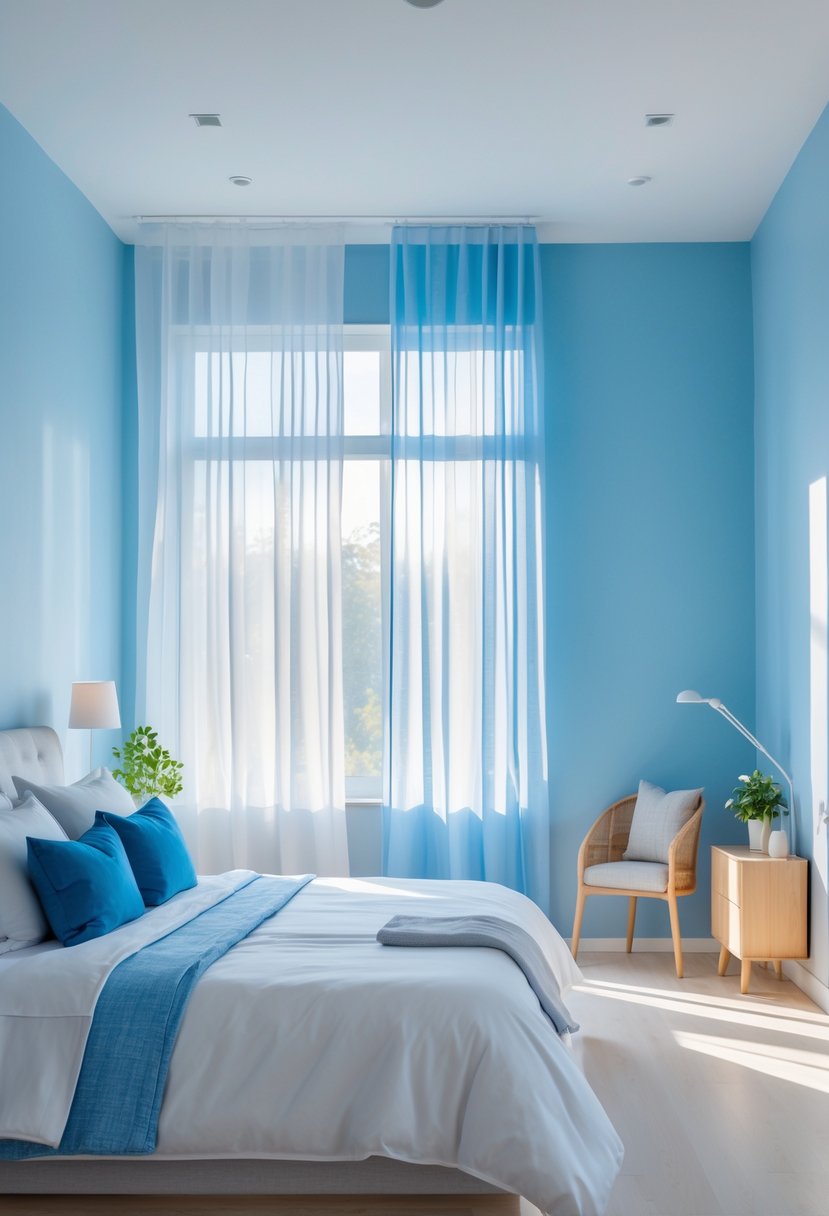
Soft blue tones are known to create a peaceful and calm atmosphere in bedrooms. These shades, like sky blue and light azure, help reduce stress and support relaxation.
Using soft blue on walls or accents can make the room feel brighter and more open. It is a popular choice for those who want a soothing, restful space.
3) Bold Accent Walls in Deep Navy
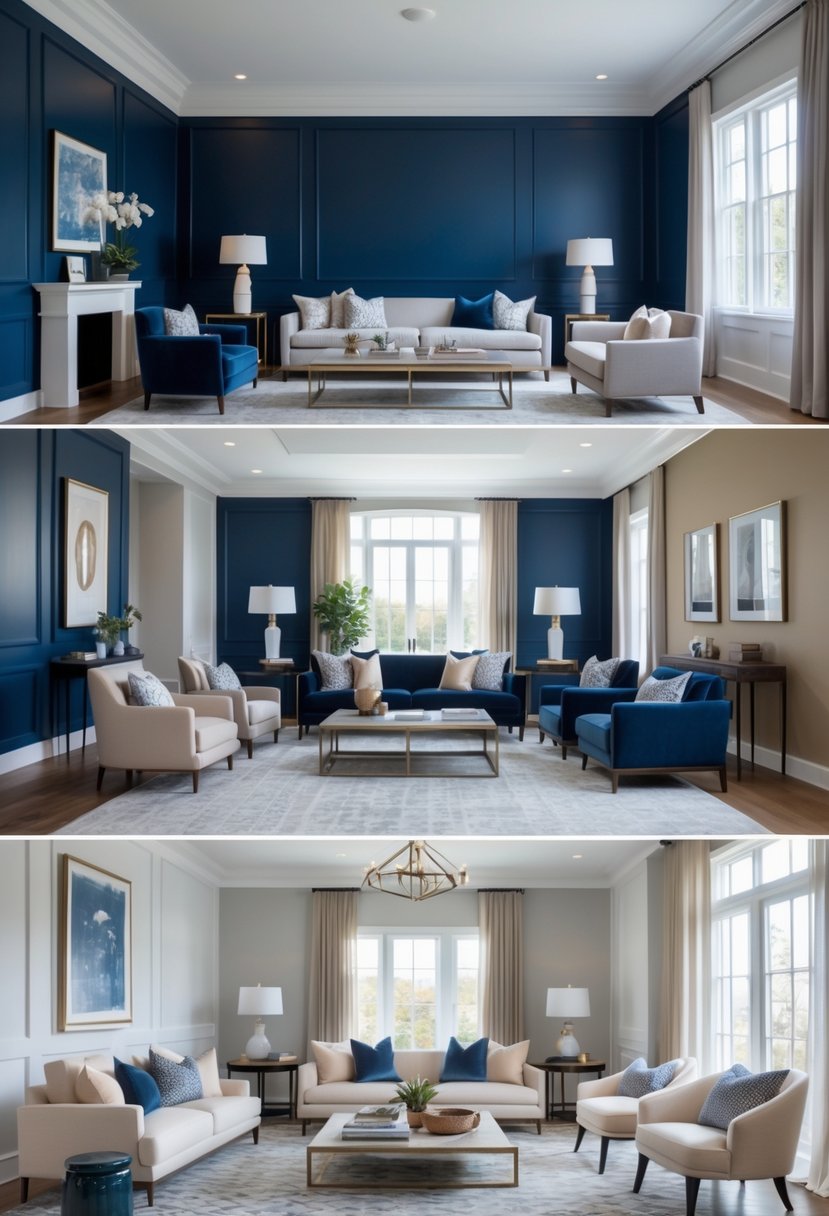
Deep navy is a strong choice for an accent wall. It adds elegance and creates a clear focal point in the bedroom.
This color pairs well with light shades like white, beige, or gray. These tones balance the boldness of navy and keep the space calm.
Navy also helps highlight furniture and decorations. It gives the room a timeless and peaceful feeling, ideal for rest.
4) Earthy Greens for a Natural Feel
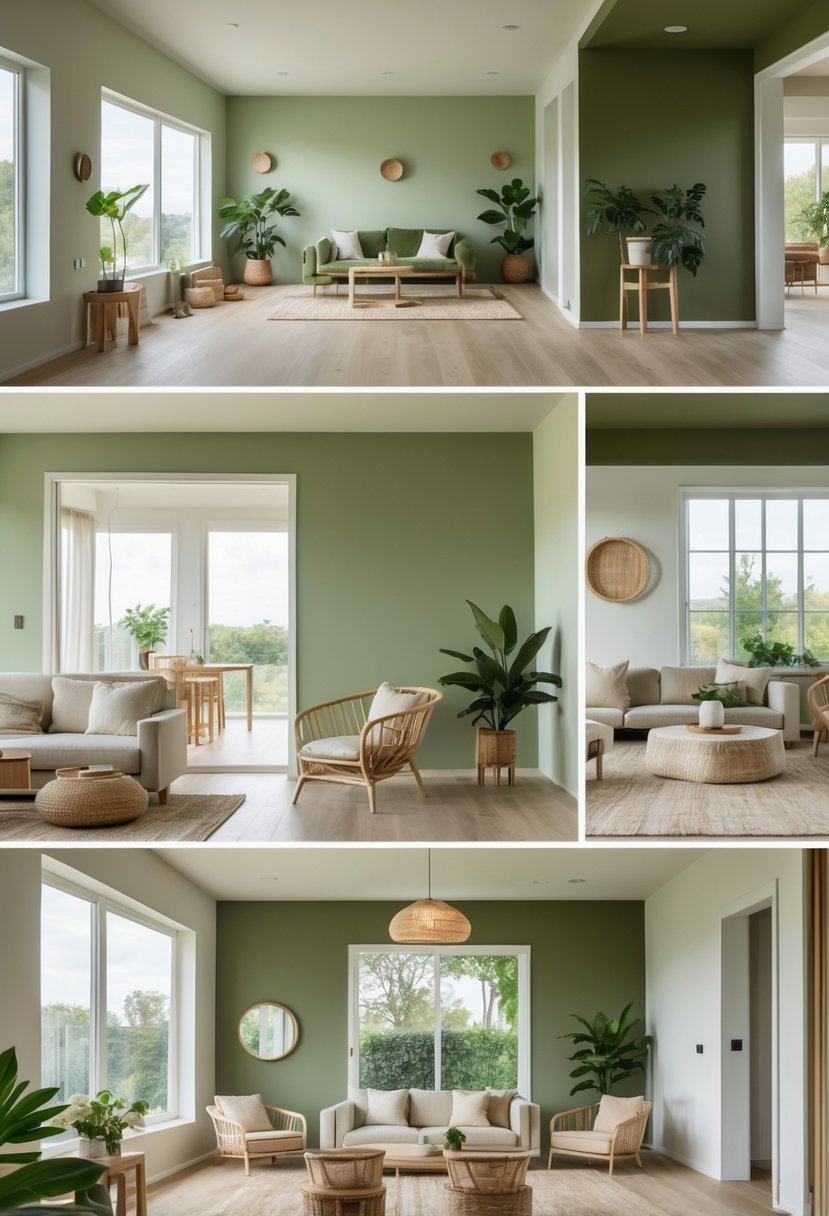
Earthy green paint colors bring a calm and natural vibe to any bedroom. Shades like sage, eucalyptus, and fern offer a mix of soft blue-greens and warm tones.
These colors work well with natural light and warm bulbs, creating a cozy, inviting space. Earthy greens pair easily with neutral or wooden decor for a balanced look.
5) Light Gray for Modern Minimalism
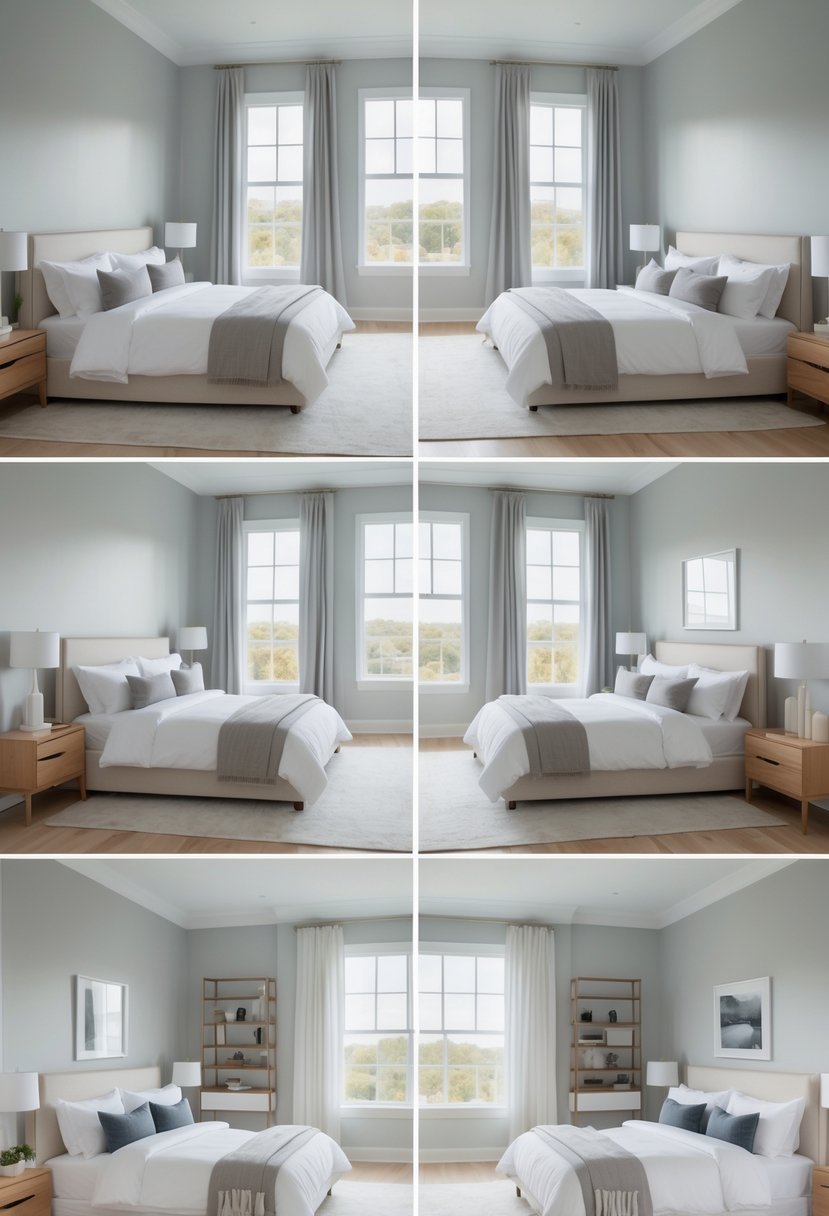
Light gray works well in modern minimalist bedrooms. It creates a calm and clean atmosphere without being dull.
This color pairs nicely with simple furniture and white or black accents. It keeps the room feeling open and uncluttered.
Using light gray walls allows other design elements, like artwork or metal fixtures, to stand out quietly. The result is a sleek and balanced space.
6) Creamy Whites to Brighten Space
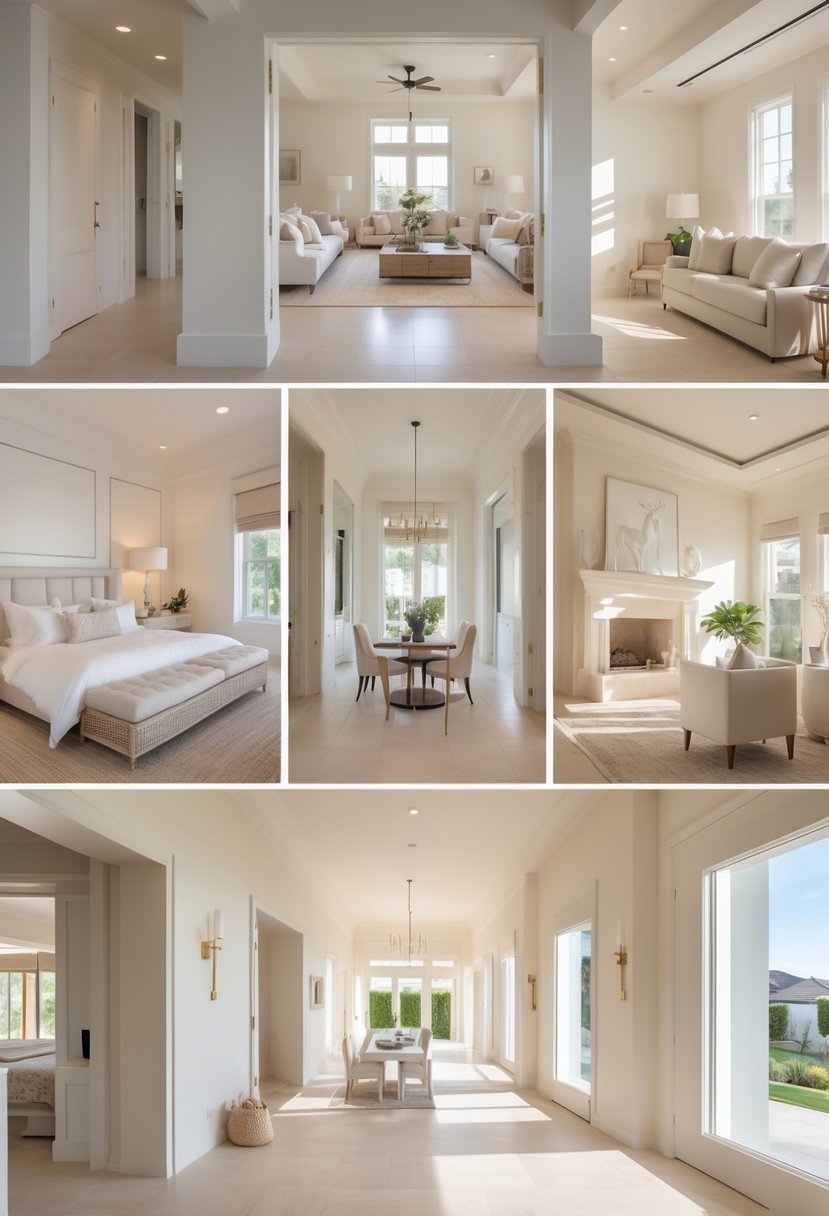
Creamy white paint adds warmth while brightening a bedroom. It creates a soft, cozy feeling without being too stark or cold.
This color works well with many furniture styles. It also helps hide wall imperfections better than pure white.
People should avoid pairing creamy white with cool, icy tones. Warm, muted colors balance its subtle yellow undertones best.
7) Dusty Rose for Subtle Elegance
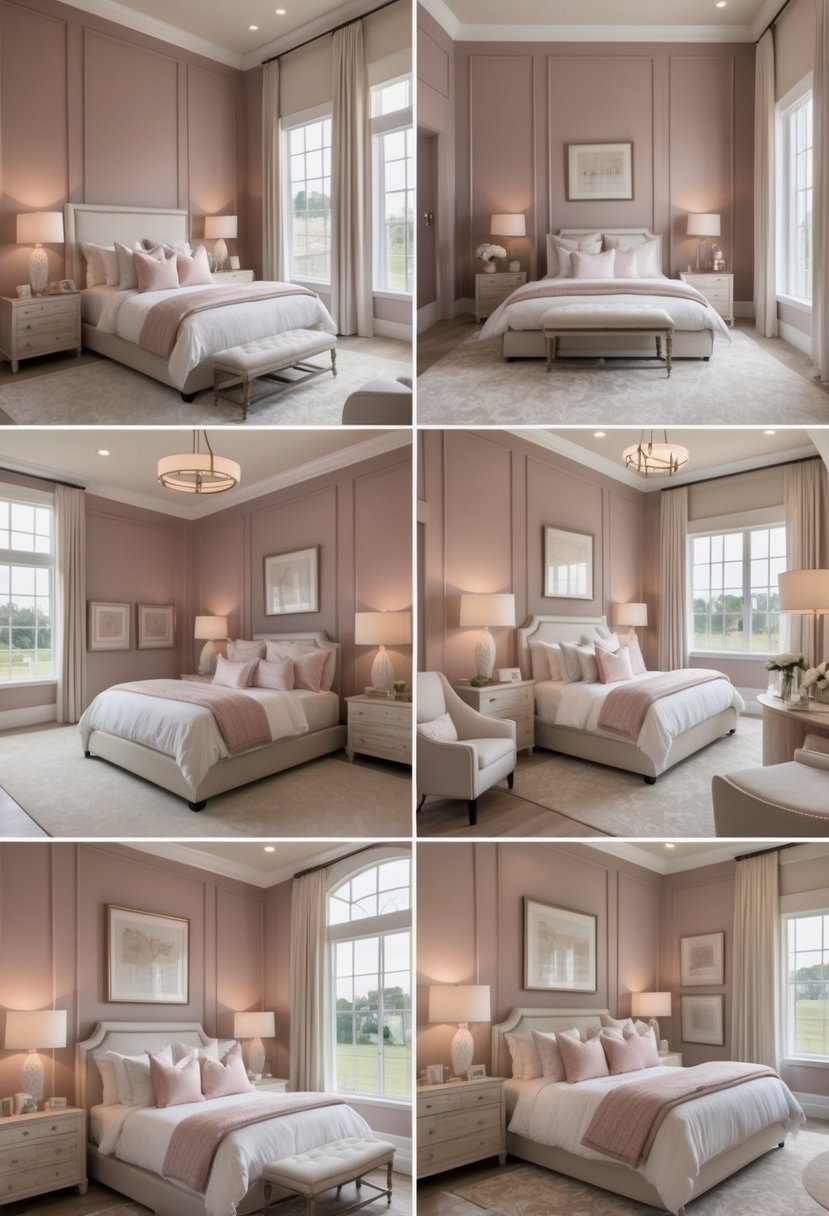
Dusty rose is a soft, muted pink that adds warmth without being too bold. It creates a calm and inviting atmosphere in a bedroom.
This color works well with gold accents or neutral tones for a refined look. Proper lighting is key, as dusty rose does not reflect much light.
It can be used on walls or as an accent in furniture and textiles. This makes it a flexible choice for different bedroom styles.
How Paint Colors Transform a 7 Bedroom Home
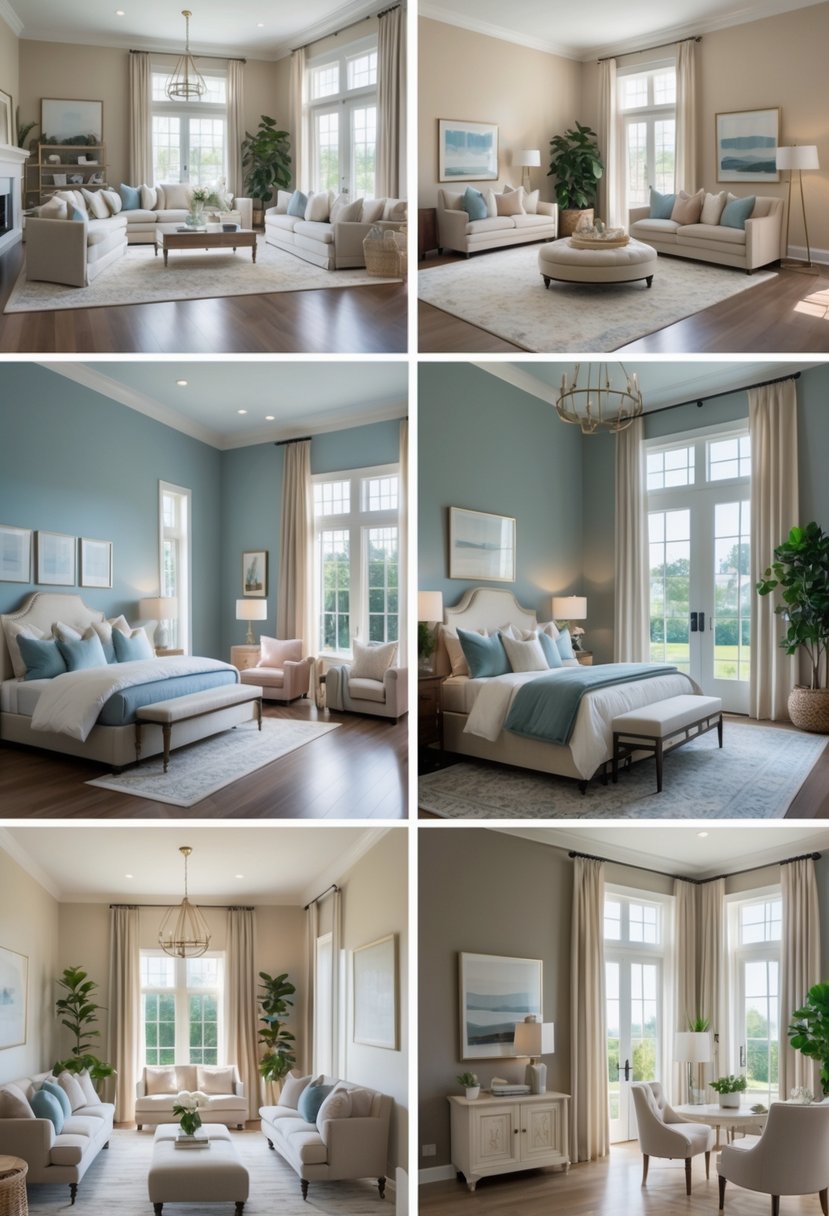
In a home with seven bedrooms, choosing the right paint colors can bring balance and character to each space. Thoughtful color choices help create a flow throughout the house and support the function of each room.
Creating Cohesion Across Multiple Rooms
In a large home, cohesion ties rooms together visually. Using a consistent color palette, or related shades of one color, helps unify different bedrooms. For example, soft neutrals with varying tones can flow smoothly from one room to another without feeling repetitive.
A homeowner might choose a base color like light gray or beige for most rooms. Then, they can add accents like pale blue, muted green, or warm taupe in different bedrooms. This approach keeps the look connected yet personalized.
Using the same trim or molding color around doors and windows in all bedrooms also enhances cohesion. It creates a subtle but effective visual link throughout the home.
Enhancing Mood and Functionality
Paint colors affect how people feel and interact with a room. In a 7 bedroom house, each room might serve a unique purpose, so paint should support these uses.
Calming colors such as light blues, soft greens, or gentle lavenders work well in bedrooms meant for rest. These hues reduce stress and promote relaxation.
In rooms that might double as home offices or playrooms, brighter or more energizing colors can boost focus and creativity. Warm yellows or light reds invite activity and positive energy.
Choosing paint colors based on room function helps make each bedroom a comfortable and useful space.
Tips for Choosing Paint Colors for Large Homes
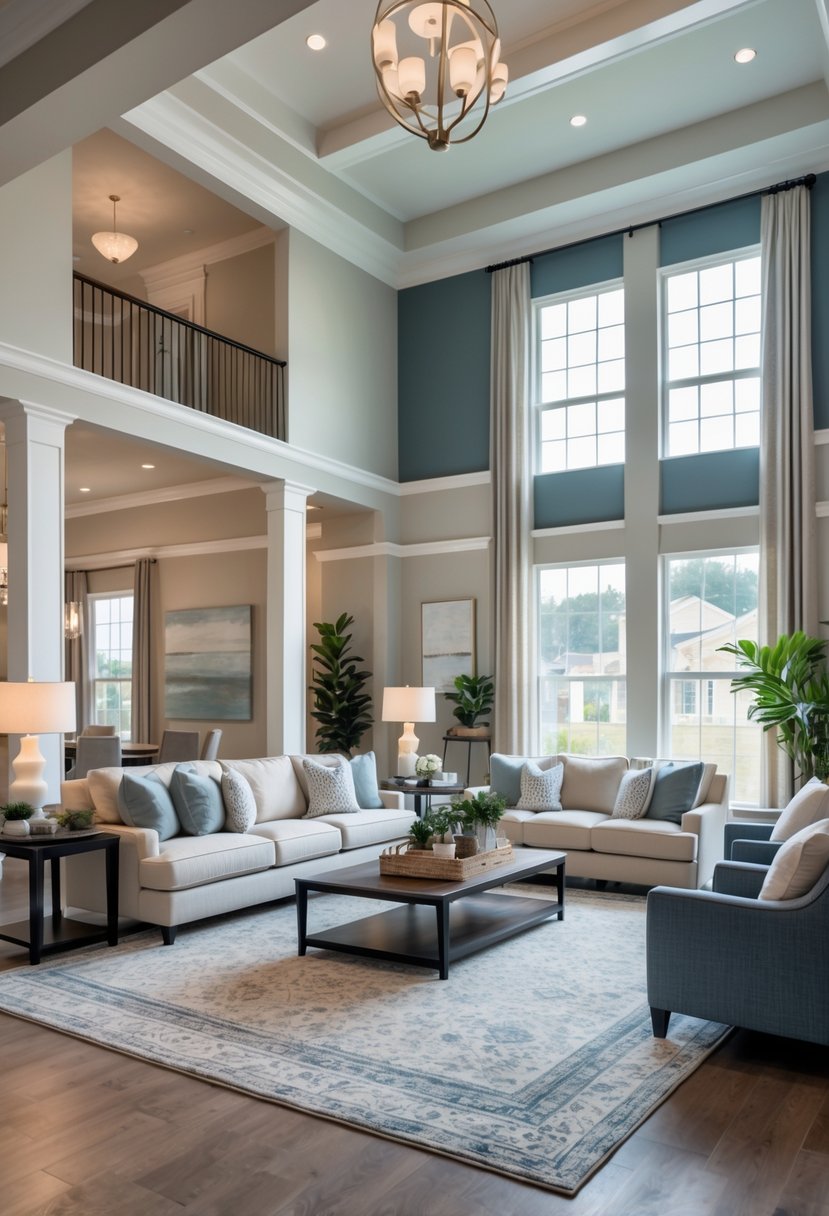
Large homes offer many options for paint colors but require careful choices to avoid feeling cold or overwhelming. Balancing strong colors with softer tones and understanding how lighting affects color can help create a pleasant and inviting space.
Balancing Bold and Neutral Tones
In large homes, bold colors can add personality but may overpower the room if overused. It is best to use bold colors on one or two walls or in smaller areas. Pairing these with neutral tones like soft whites, beiges, or grays helps balance the space. Neutral colors provide a calm backdrop and allow furniture and art to stand out.
Using a color palette that mixes strong and neutral tones gives structure and avoids visual chaos. For example, a deep blue accent wall can work well next to three neutral walls. This approach also makes large rooms feel more cozy and grounded, preventing them from looking empty.
Considering Lighting and Room Size
Lighting greatly impacts how paint colors appear in large rooms. Natural light can make colors look brighter and more vibrant. In rooms with less light, lighter colors help keep the space feeling open and fresh.
It is important to observe the room at different times of day. Paint colors can shift from warm to cool depending on sunlight. Using paint samples on walls before deciding allows accurate judgment.
In very large spaces, darker colors can be used to create intimate zones. Conversely, very bright or light colors can make rooms feel bigger but may lack warmth if used alone. Adjust paint choice based on both natural and artificial light sources.
Frequently Asked Questions
Choosing the right bedroom paint color involves balancing calmness, coziness, and style. The colors must support restful sleep while fitting the room’s mood and decor.
What are some recommended Benjamin Moore paint colors for a serene bedroom?
Benjamin Moore offers soft blue tones like “Palladian Blue” that help create a calming environment. Light grays such as “Gray Owl” are also popular for a peaceful and modern look. These colors promote relaxation without feeling cold or sterile.
How does one choose an optimal bedroom wall color for improved sleep quality?
Colors that reduce stress and promote calm are best for sleep. Soft blues and warm neutral tones encourage restfulness. Avoid overly bright or bold colors, as they can be stimulating and make it harder to relax.
What are the top paint colors for creating a cozy and inviting bedroom?
Warm neutral tones like beige or taupe foster a cozy atmosphere. Earthy greens add a natural, soothing feel. Deep navy accent walls give depth and warmth while still keeping the space comfortable and inviting.




